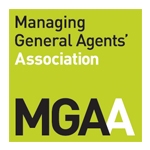Registering a design in the UK
Why – what’s in it for me?
If you haven’t thought of registering your business designs, you should…simple as. Whilst it may sound like a dull paper exercise involving lawyers, cost and some of your time the value it can add to your business surely makes it more interesting? A registered design is a vital business asset. All too often overlooked by businesses, registered design rights are a useful tool to protect that special look of your products. In the words of one well respected tech’ commentator:
“Design adds value faster than it adds costs”.
Many businesses don’t realise how good their designs are until they’re copied. Don’t let that happen to you. Protect your work by filing for Registered Designs in the UK or further afield. There are good reasons to register your design:
• No one has the right to use part of your design without your approval. You are in control.
• In the event of a dispute you’re better placed evidentially not even having to show copying to win an infringement action;
• Many trademarks have graphic design elements that need protecting;
• Unregistered design rights do not exist in many countries outside Europe;
• It’s easier to licence (and monetise) a registered design;
• The fact your design is registered is often enough to deter copying all together;
• It’s the simplest and most practical way to protect the form and appearance of your invention.
So, now you’re interested, what sort of design is registerable and how do you register it in the UK?
At its core, a UK registered design grants the owner of that design a monopoly right and protection over that design for 25 years – if the necessary renewals are undertaken every 5 years. That is, a design right over the appearance of the whole or part of the product resulting from the features of, in particular:
• Lines;
• Shape;
• Contours;
• Configuration;
• Colour;
• Texture;
• Materials;
• Ornamentation
• Pattern;
and…taking into account both 2 and 3 dimensional features of that product or design.
The legal ‘test’
To register a design, it must be new and have individual character. There can be difficulties in the registration process if something similar already exists. To meet the ‘new’ test, the design must differ from any existing designs by something other than “immaterial details”. It must have individual character and create a different overall impression (than similar existing designs) on an informed user of the class of those similar designs and products – the user being neither a designer nor manufacturer.
What if the design is already public?
You can still apply to register a design up to one year after the design has been made public. Clearly, thinking ahead is key and it is far preferable to apply as soon as the design is created.
What information is required for filing?
• Name and address of the applicant;
• Country of incorporation (if appropriate) of the applicant;
• Two good representations of the design which should include all views of the design;
• Indication detail of the product to which the design is applied;
• Details of application on which Convention Priority is to be claimed, if any; and
• Partial disclaimer if appropriate.
You may well need a lawyer or Intellectual Property specialist to help you with the application process but their fees and that of the application process are typically modest. A small price to pay for protecting your business from copying and infringement down the line and you will be building the asset value of the business at the same time.
Perhaps registering your designs is not so dull after all….
Murray Fairclough
Development Underwriter
OPUS underwriting Ltd.







